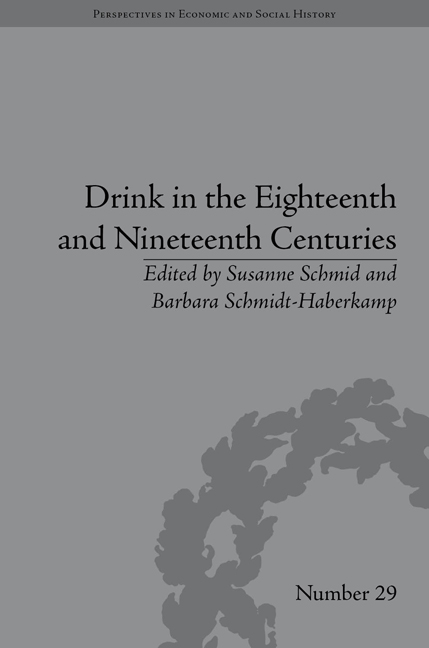Book contents
- Frontmatter
- CONTENTS
- Acknowledgements
- List of Contributors
- List of Figures and Tables
- Introduction
- Part I Ritual and Material Culture
- 1 Politics by Design: Consumption, Identity and Allegiance
- 2 Drinks, Domesticity and the Forging of an American Identity in Susan Warner's The Wide, Wide World (1850)
- Part II Institutions and Social Class
- Part III Temperance and the Misery of Alcohol
- Part IV Intoxication and Therapy
- Part V Case Studies: Rum, Cocoa and Magical Potions
- Notes
- Index
1 - Politics by Design: Consumption, Identity and Allegiance
from Part I - Ritual and Material Culture
- Frontmatter
- CONTENTS
- Acknowledgements
- List of Contributors
- List of Figures and Tables
- Introduction
- Part I Ritual and Material Culture
- 1 Politics by Design: Consumption, Identity and Allegiance
- 2 Drinks, Domesticity and the Forging of an American Identity in Susan Warner's The Wide, Wide World (1850)
- Part II Institutions and Social Class
- Part III Temperance and the Misery of Alcohol
- Part IV Intoxication and Therapy
- Part V Case Studies: Rum, Cocoa and Magical Potions
- Notes
- Index
Summary
In eighteenth-century studies, the history of consumption and material culture is indivisible from the study of the home and women, such that the objects brought into focus are invariably drawn from a feminized domestic interior. The outcome, as Frank Trentmann has put it, ‘is the dominance of the “soft,” decorative, and visible’. The material culture of certain drinks has been prominent in this field. The arrival in eighteenth-century houses of new hot drinks – tea, coffee and chocolate – and the objects necessary for their consumption were arguably the kernel of a new set of social practices centred on non-commercial domestic sociability orchestrated by leisured women. This was to revolutionize the culture of the house, providing the tools which would kick-start the emergence of a culture of domesticity. Indeed, the eighteenth-century house was the engine of the intensification in consumer demand, the seat of the ‘industrious revolution’ and, ultimately, a driver of the industrial revolution. What of alcoholic drinks, however? This chapter focusses on one man's designs for a set of punch bowls. While developing some of the themes in work on eighteenth-century material culture, I will make two particular interventions. First, this chapter is concerned with men's – indeed, one man's – engagement with material culture. Arguably, women have historically been more visible in representations (particularly critiques) of consumption.
- Type
- Chapter
- Information
- Drink in the Eighteenth and Nineteenth Centuries , pp. 11 - 22Publisher: Pickering & ChattoFirst published in: 2014



